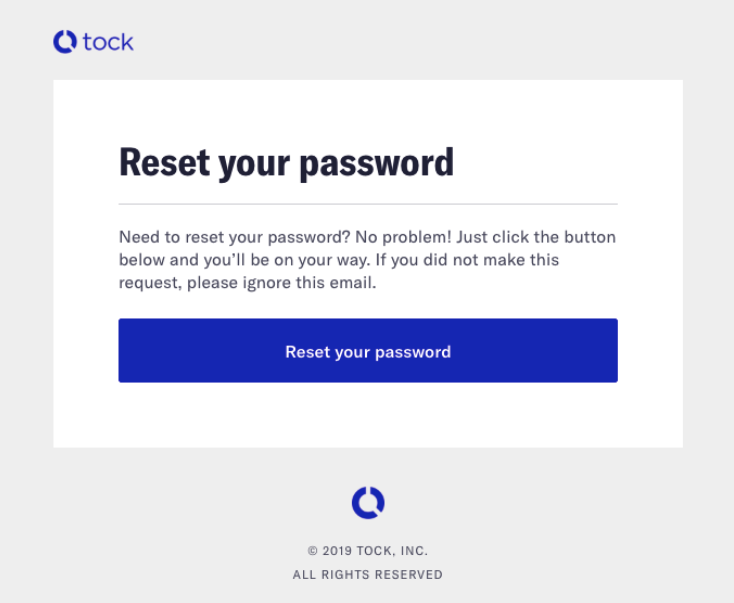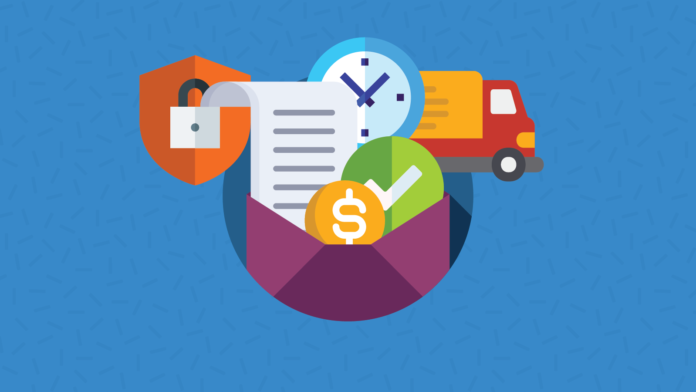Create your very own Auto Publish News/Blog Site and Earn Passive Income in Just 4 Easy Steps
Transactional email design could be the difference between a subscriber who sings your praises and one who completely forgets about their interaction with your brand, never to return.
Transactional email communication is an extremely important part of the customer experience. These days, even when you make purchases at a physical store, you often have the option of getting your receipt sent straight to an email address.
But take a look at the transactional emails in your inbox. How many of them really “wow” you? Which brands are using these communications to make a personal connection? Some nail the opportunity to add a memorable, human touch. Too often, however, transactional emails are boring, plain, and overly technical.
If you communicate well through transactional emails, subscribers will feel important, valued, understood, and well-treated. Just as they should.
The question is: how can you get the most out of your transactional emails? Is there anything you can do in transactional email design and strategy that will deepen loyalty, solidify purchase decisions, increase engagement, or make subscribers’ lives easier?
Transactional emails vs marketing emails
What separates transactional emails from email marketing messages such as promotions, newsletters, and lead nurturing?
You typically send marketing emails to a broad audience with a message intended for everyone on the list or segment that receives it.
A transactional email is sent to an individual and is personalized to them based on an action they took, or need to take. There is often important and sometimes sensitive information inside.
While both marketing and transactional emails can be personalized, transactional emails are personal by nature. The goal of transactional emails is less about getting opens and clicks than it is to conveniently convey the right information in a clear and timely manner.
10 types of transactional email designs
Transactional email design should never distract from the message. That’s why we’re not necessarily suggesting you need to add a ton of GIFs, write goofy copy, or clutter things up with unessential content.
A basic transactional email design will look something like this (and there’s nothing wrong with that):
This message certainly gets the job done. And it looks like a receipt, which could be a good thing. But can emails represent the best of both worlds — good info and good design?
Let’s take a look at some common transactional emails and how brands use design to create an ideal customer experience.
1. Welcome/registration emails
When someone creates an account or signs up for your email list, they should receive a welcome or registration email from your company. The welcome email series sets the tone for future communications from your brand. And, you’ve only got one chance to make a first impression.
Here’s a welcome email from the skincare company Romer. It uses friendly faces and a welcoming tone along with a discount code as well as basic information on the brand’s philosophy and benefits. It’s well-designed but still simple and straightforward.
Get more advice on creating an effective welcome email series.
2. Order confirmation/receipt
Automated order confirmation emails are probably the first things that come to mind when you picture a transactional email. While basic, they are directly connected to trust and reliability. A confirmation email is reassuring. It shows customers the order was received and details are correct.
Notice how Nike uses a clean and simple transactional email design. But this order confirmation email also includes an image of the product purchased. That visual makes it much easier to quickly process the information.
3. Shipping and order tracking notifications
Likewise, updates about the status of an order reassure the customer that their order is on its way and hasn’t been lost or stolen. Sometimes tracking functionality is combined with order confirmation emails.
The designs of shipping notifications and package tracking emails are often enhanced with dynamic content that updates whenever the email is opened. Or, someone can click through to a web page to track an order.
While a transactional email packed with text and links can be confusing, a few basic design elements will make it easier for people to identify where to click to track their order. Food delivery emails, like this one from Chipotle, are great examples.
4. Password reset emails
In a world of too many passwords that are impossible to remember, the password reset email is an absolute necessity. Nothing is more frustrating than losing access to an account. We all do it. And we all feel a little stupid when it happens.
A good password reset email can use lighthearted copy to make the situation more pleasant. See how the restaurant reservation service, Tock, makes it seem like no big deal?

5. Security checks
“Is this you?” When a system doesn’t recognize the person logging in to an account, it might send a security check email to the known email address of the account owner, notifying them about a possible security breach or providing details for two-factor authentication.
Here’s a pretty common example from SimilarWeb:
 View on Really Good Emails
View on Really Good Emails
6. Double opt-ins
If you use a double opt-in approach to email list building, you’ll need to send an opt-in email that confirms both the intention of the person and the email address they entered.
This is an instance where you certainly need people to take action. Good transactional email design helps encourage them to complete the process of subscribing or updating preferences. AutoTrader does this well with typography and a clear call to action.
7. Notification emails
This email might tell the recipient about activity related to their social media account or responses to their comment on a blog. There are also many online platforms that notify users about activity and communications within an application.
Automatically bringing in the profile image as well as the message itself creates an ideal inbox experience. If it’s not urgent, the subscriber can choose to ignore the notification.
Here’s an example from Behance:
8. Customer feedback requests
This type of email asks for reviews and testimonials. They could include the ‘net promoter score’ emails that ask subscribers to rate their experience from one to ten. These emails could also include a link to a review site and ask the subscriber to leave a review there.
Here’s how Target does it:
Notice how the copy encourages reviews by telling subscribers they’ll be helping others when they provide their feedback. That plays on an important emotion that customers experience when they leave a review.
9. Cancellations/renewals
If a customer or subscriber cancels an order or a subscription, they expect an email confirming that this has been done. It’s just like an order confirmation. If they don’t hear from you, they wonder if their request has been processed and they start to get nervous.
Accidental cancellations happen too — such as when a subscriber’s payment information is out of date. Hulu does a nice job communicating this problem with a transactional email design that includes an icon of a broken credit card.
10. Thank you emails
You can set up automated thank you emails for just about anything a subscriber does, even something like answering a poll or filling out a survey. Gratitude is good marketing and good customer service.
Thank you emails are a celebration. So, why make them plain and boring? Buff uses fun copy and design to thank people for joining a waiting list.
How to improve transactional email strategy
So, what can you do to make your transactional emails more effective? Here are four tips you can implement immediately.
1. Write better copy
Transactional emails should not sound like a computer wrote them. They should be friendly and informative, but also brief and on topic.
You’re typically not selling anything here, so ease of engagement is your number one goal.
And this includes the subject line. It should be very evident from the subject line that this is a transactional email and not one to be skipped. This isn’t the right place for clever puns. The subject should say exactly what the email is. For example:
- Shipping notification — your package location
- Welcome to [Company Name]
- Security alert — We noticed something on your account
- Reset your password
The subject lines explicitly state what the email is about. This is why open rates for transactional emails are so much higher than marketing emails. The recipient is either expecting it to arrive any second, has indicated that they want to or will appreciate the service provided.
This is also a good place to use your brand’s voice, but be sure to take the right tone for the situation.
Security alert and password reset emails are not fun. So don’t try to inject humor here. People in these situations are often stressed and frustrated, and humor will only anger them because it makes light of their situation.
But order confirmations, welcome emails, and thank you emails have some room for a little more creativity and humor.
2. Update transactional email designs
Email design includes things like information architecture — how easy is it to consume the information and quickly identify the most important details? This goes for those with disabilities as well. Are your emails accessible to everyone?
With many types of transactional emails, this is arguably the most important design element. If a subscriber is expecting a password reset email, it better be instantly clear how to reset the password.
You can achieve this by using headings, text colors, and font weights to set apart key information and direct people to relevant links or other information. This includes attractive buttons.
Second, imagery needs to convey the right emotions for the transactional email.
An order tracking email can be exciting: “Your package is almost here!” You can add graphics that represent that feeling. For order confirmation emails, show a picture of the products they ordered. This has the dual effect of reminding them it’s coming and reminding them how much they want it.
But a cancellation email isn’t exciting. A different set of emotions are in play here.
This is why one of your best design tips for transactional emails is to use icons that speak to the specifics of the situation.
There are icons you can add that people recognize instantly for things like shipping, delivery, security, success, and apologies. These go much further than words and increase the positive feelings of the person receiving the email. You’ll make them feel better.
3. Use upselling and cross-selling, carefully
The CAN-SPAM law makes a distinction between transactional and commercial emails. This is critically important because anti-spam laws don’t apply to transactional emails, since they contain personal, relational, and necessary information.
So if you inject too much selling and too many offers in your transactional emails it could lead to trouble.
That said, there are situations where you can include some upsells and cross-sells.
An order confirmation email might be a reasonable place to suggest an additional, related item. A welcome email is a great place to offer a new customer discount or a new subscriber special offer. Subscription renewal emails are an opportunity to offer an upgrade.
But putting sales offers in password reset emails? No… not a good idea.
Here’s a great example of this from Me Undies, with an order confirmation email that has some fun with an undies haiku, order tracking information, and a soft referral offer to expand their customer base.
4. Employ dynamic content and personalization
Personalization is a no-brainer in transactional emails. The email is being sent to only one person, so there’s no reason whatsoever not to personalize it.
This could mean using the subscriber’s name, company name, title, or location.
You can also add dynamic content like delivery status updates and countdown timers.
Here are a few resources that can help you add attention-getting dynamic design content to your transactional emails:
More solutions for transactional emails
One other note about transactional emails that you don’t want to miss — deliverability is non-negotiable.
Preventing your commercial emails from being marked as spam will always be an issue. But transactional emails should never, ever be marked as spam. The information they contain is often critical and time-sensitive.
How do you prevent this? You separate your transactional emails from your marketing emails. There are several ways to do this, and Mailgun can help you set up your email account so you use different email addresses, IP addresses, and subdomains depending on the type of email.
That way, your transactional email sender reputation will have no relation to your commercial one. Once you do that, you shouldn’t have to worry about transactional emails going to spam.
If you do invest in improving transactional email design, you’ll want to make sure your efforts pay off. Be sure to regularly preview and test transactional email templates. Email on Acid offers unlimited testing on dozens of major clients and devices.
Author: The Email on Acid Team
The Email on Acid content team is made up of digital marketers, content creators, and straight-up email geeks.
Connect with us on LinkedIn, follow us on Facebook, and tweet at @EmailonAcid on Twitter for more sweet stuff and great convos on email marketing.
Create your very own Auto Publish News/Blog Site and Earn Passive Income in Just 4 Easy Steps







